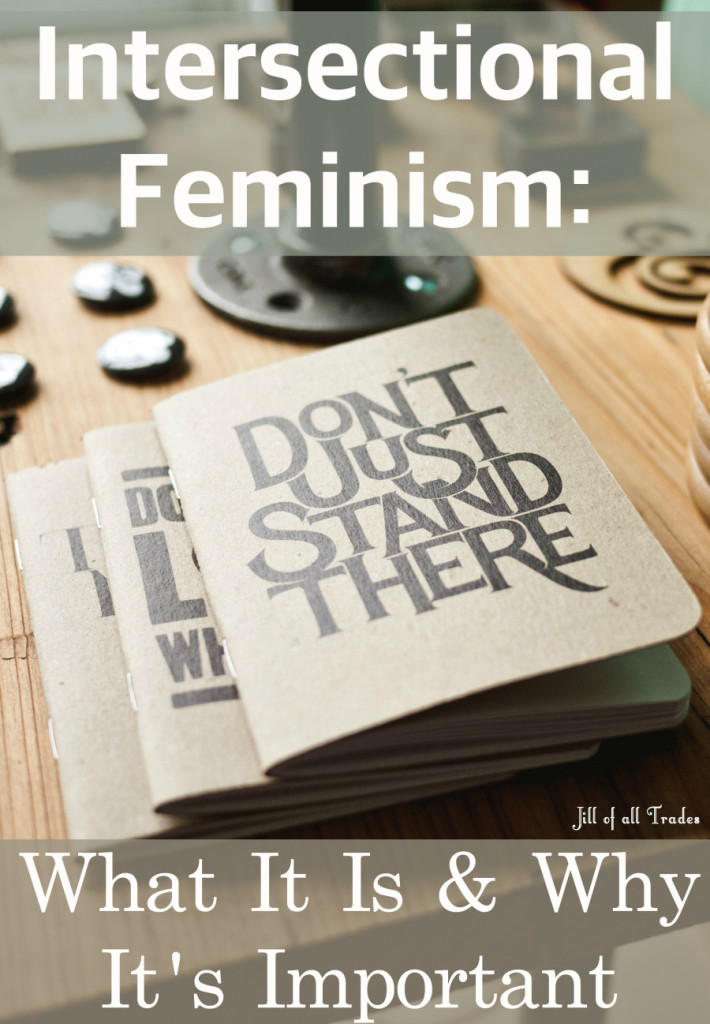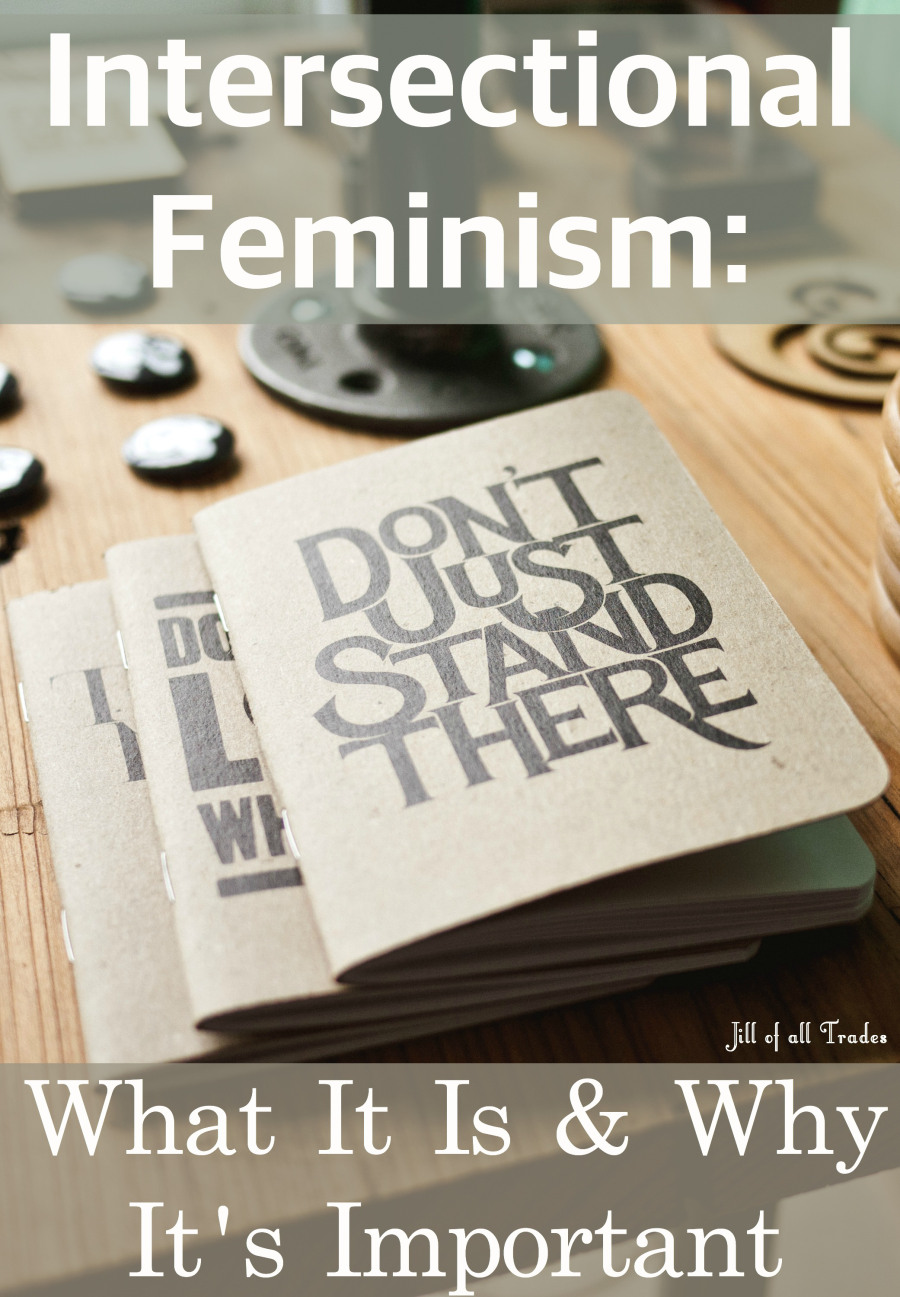When a person thinks of feminism, one usually thinks of people who fight for gender equality and women’s rights. And this is in general, applying to the whole population of those identify with that gender and support them. However, under the feminism umbrella, every feminist has their own experience and background that influences, connects, and informs their feminism. They are united under this banner, but feminists, individually, are different. It’s not just feminism anymore. Samantha from The Jill of All Trades explains below:

Photo Courtesy of Samantha
Have you been hearing the term “intersectional feminism” lately and been like…what the hell is that? Some fancy-talk with a complicated definition, or some made-up feminist word? Is it a term only some feminists use, like “womyn?”
Well don’t fear, because it’s neither very complicated nor very shocking. Most of my readers, based on demographics and surveys, probably believe in intersectionality within feminism and don’t even know it! It’s been around for decades, but has only come into the mainstream recently, and has been getting a lot of buzz without a lot of explanation. So I’m here to explain to you what it is and why it’s important.
Definition of Intersectional Feminism:
The term was coined in 1989 by law and civil rights professor Kimberlé Crenshaw, and is defined as:
“The view that women experience oppression in varying configurations and in varying degrees of intensity. Cultural patterns of oppression are not only interrelated, but are bound together and influenced by the intersectional systems of society. Examples of this include race, gender, class, ability, and ethnicity.”
What this means, in layman’s terms, is that other social issues and patterns of oppression are closely linked with the system of oppression for women; in other words, it is important to distinguish that not only is a person with a disability or who is a racial minority or who is not cisgender or who is not straight going to experience an extra layer of social hardship, but it cannot be separated from the oppression they experience as a woman.
For example, I am a middle-eastern woman and as a result I experience both racism and sexism in everyday life. A white woman in America would experience less oppression, and a black woman would experience more. Women who are gay, transgender, lower-class, or have a disability would experience still more. Those experiences on an individual level are all closely related and important.
Why Intersectional Feminism is Important:
My experiences as a woman can’t be separated from my experiences as a minority because they are closely linked and intertwined. I am treated a certain way oftentimes not because of one thing or the other but because of both combined. No one would make jokes about burkas to me if I were not both a woman and middle-eastern (even though Armenians are almost exclusively Christians both historically and currently—but many people don’t bother getting details like that before they start in with the burka and terrorist jokes). And black, Asian, gay, transgender, and disabled women (to list only a few of many examples) experience things specific to their personal combination of disadvantages as well.
Many terms and groups have arisen over the years to address the issues within the feminist movement as being heavily focused on the white, straight, middle-class woman’s experience—most notably womanism, which focuses specifically on the issue of race as it relates to feminism and addresses a pattern of ignoring black women’s experiences, especially in American feminism. This term came about in the late 70s and boasts such followers as Alice Walker (who is credited with coining the term and is also one of my favorite writers of all time) and Audre Lorde.
Intersectional feminism encompasses the ideas of womanism as well as much more. It seeks to give proper notice to other underrepresented groups of people within the larger community of women, including those with a non-binary understanding of gender.
In my opinion, while the issue of race is probably the largest within feminism, the issue with gender is the least well understood. I have heard from far too many feminists whom I otherwise agree with some shockingly close-minded statements about gender. We all live in our own understanding of the world, and no one has it all right—and I’m not saying I expect everyone to be born with an innate understanding of the complexities of gender. However, it can be a large issue within groups of feminists to deny that transgender women experience sexism, for example, or even worse, to treat them with suspicion and rudeness because they consider them to be men who are infringing upon women’s spaces. Some feminists reject persons of ambiguous or fluid gender identity as having any belonging in a community of women. Some feminist women complain about transgender women using the women’s bathroom. These are issues that are hugely important and in America at the moment are politically relevant, as new laws are introduced regularly that either help or hinder the LGBTQ community.
It is absolutely imperative that feminism address the issues of other oppressed groups within their own and acknowledge the complexities of individual struggles. The greatest social movements happen when people of differing backgrounds band together to face a common issue, in this case a social, political and economic system of oppression that affects so many people in so many different ways.
“Part of the problem with Western feminists, I find, is that they take after their brothers and their fathers. And that’s a real problem.”
-Alice Walker
This is not to say that women with any privileges of any kind should only be focused on those less privileged, and ignore their own experiences. Far from it. It is vital to the feminist movement that a voice be given to people from all different backgrounds and experiences, including those of the white, middle-class, straight, cisgendered, able-bodied woman. Rather, publications and groups that claim to address feminism as a general whole should be considering which people they give the most attention to, and remember to consider others outside their personal realm of experience to give the spotlight to, and people with influence should think carefully about who they include and exclude in the way they speak. Individuals who speak up about their own personal experiences should continue to do so, and make their voices heard—and remember to listen when people of different backgrounds from themselves speak about their experiences as well.
I also believe that on the level of the individual, there is a point where they must learn to be humble and empathetic, and shut their mouth and open their ears and their heart to those around them. It is part of growth as a person. And when we look outside ourselves and our own experiences (like when I took Women’s Studies in college and learned that there was such a thing as a gender spectrum) we are able to better understand the world around us, how to relate to others, and in the long run, even how to understand and relate to our own selves.
**Originally published on Samantha’s blog.**

Samantha is a hippie, writer, and blogger at the humorous feminist blog Jill of all Trades. She can also be found spending way too much time on Twitter.

